Presently, India’s defence budget – 1.74 per cent of its GDP – is too low to undertake the capacity building necessary to deter China from contemplating another border war. The defence budget needs to be increased gradually to first 2.0 and then to 3.0 per cent of the GDP. India’s growing economy should be able to sustain this hike in the defence budget over a period of three to five years, especially if the government simultaneously shows the courage to reduce wasteful subsidies.
“India’s defence budget is declining in real terms, while China’s is growing at double-digit rates every year.”
In terms of real purchasing power, India’s defence budget has been declining consistently…
In an otherwise pragmatic budget for 2015-2016 that has been hailed as growth oriented, Finance Minister Arun Jaitley has not done enough to give the much needed boost to military modernisation. The proforma hike in the defence budget will not be adequate to make up the ‘critical hollowness’ in India’s defence preparedness pointed out by former Chief of the Army Staff, General VK Singh; nor will it help to meet the growing threats and challenges facing the country and India’s increasing responsibilities as a regional power.
The increase of Rs 24,357 crore ($3.92 billion) from Rs 222,370 ($35.86 billion, Revised Estimates for FY 2014-2015) to Rs 246,727 ($39.8 billion, Budgetary Estimates for FY 2015-2016) is too low to even allow for inflation, which is ruling at about 6.0 to 7.5 per cent. The Rupee’s steady slide against the US dollar to Rs 62 to a dollar has eroded its purchasing power considerably. Annual inflation in the international prices of weapons, ammunition and defence equipment is generally between 12 to 15 per cent. In fact, in terms of real purchasing power, the defence budget has been declining consistently. Each year’s delay in the procurement of operationally critical items substantially increases the burden on the exchequer.
Of the total allocation for defence, the Indian Army will get Rs 104,158.95 crore ($16.80 billion), the Navy Rs 15,525.64 crore ($2.50 billion), the Air Force Rs 23,000.09 crore ($3.70 billion), the Ordnance Factories Rs 2,884.23 crore ($0.46 billion), the Defence Research and Development Organisation Rs 6,570.09 crore ($1.06 billion). The remaining amount of Rs 94,588 crore ($15.25 billion) has been allotted on the capital account for the acquisition of modern weapon systems, including initial payments for the 22 Apache attack helicopters and 15 CH-47F Chinook medium-lift helicopters, C-130 tactical transport aircraft, frigates and submarines.
India’s per capita expenditure on defence is less than $10, while the average expenditure of the top ten spenders in Asia is $800…
The Indian armed forces need to upgrade their command and control systems and substantially improve their intelligence, surveillance and target acquisition capabilities if they are to become proficient in launching effect-based operations in a network-centric environment riddled with threats to cyber security. It is well known that India plans to spend approximately $100 billion over ten years on defence modernisation.
It has been the practice to return large chunks of funds unspent year after year. The funds earmarked on the capital account were fully spent by the government for the first time in FY 2011-2012. In the current year (FY 2014-2015), the Ministry of Defence (MoD) was unable to spend Rs 12,622 crore ($2.04 billion) from the funds allotted for modernisation. Of this, an amount of Rs 5,992 crore ($0.97 billion) was diverted to the revenue account for routine expenditure. The remaining amount of Rs 6,630 crore ($1.07 billion) is once again proposed to be returned unspent to the exchequer.
As a ratio of the projected GDP for FY 2015-2016, India’s defence expenditure is pegged at 1.74 per cent vis-a-vis 1.76 per cent in 2014-2015. India will spend 11 per cent of the total government expenditure on defence this year. The United States spends 4.0 per cent of its GDP on defence, China 2.5 per cent and Pakistan 3.5 per cent. It has been empirically established that defence expenditure of up to three per cent of the GDP makes a positive contribution to socio-economic development.
India’s per capita expenditure on defence is less than $10, while the average expenditure of the top ten spenders in Asia is $800 approximately. India’s soldier-to-citizen ratio, at 1.22 per 1,000 citizens, is among the lowest in Asia. The average of the top ten Asian nations is about 20 soldiers per 1,000 citizens.
India plans to spend approximately $100 billion over ten years on defence modernisation…
The Parliament’s Standing Committee on Defence has repeatedly recommended the gradual raising of defence expenditure to 3.0 per cent of the GDP. However, the 13th Finance Commission had recommended that the nation’s defence expenditure should progressively come down to 1.76 per cent of the GDP by 2014-2015. Successive Finance Ministers appear to have decided to pay heed to this unjustifiable advice.
China’s Defence Budget
While India’s military modernisation has been stagnating, China’s People’s Liberation Army (PLA) and its sister services – the PLA Navy (PLAN), the PLA Air Force (PLAAF) and the nuclear strike force – the Second Artillery – have been modernising at a rapid pace for almost two decades, backed by a double-digit annual hike in the defence budget. Early on, in the Chinese Year of the Sheep and in the wake of the spring festival, the People’s Liberation Army (PLA), the PLAN and the PLAAF were given something to cheer about. The National People’s Congress (NPC) – China’s rubber stamp Parliament – hiked the defence budget for 2015-2016 by 10.10 per cent to $145.68 billion (Yuan 888.69 billion). This is over three times India’s planned defence expenditure. As China invariably conceals many items of expenditure on security, its actual expenditure is likely to be over $160-170 billion.
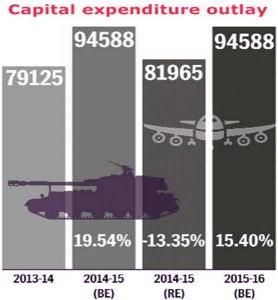 This is the fifth consecutive double-digit hike in the allotment for defence despite steadily declining growth rates. It is a clear signal from the regime led by President Xi Jinping and Premier Li Keqiang that China will continue its relentless march towards becoming the pre-eminent military power in Asia.
This is the fifth consecutive double-digit hike in the allotment for defence despite steadily declining growth rates. It is a clear signal from the regime led by President Xi Jinping and Premier Li Keqiang that China will continue its relentless march towards becoming the pre-eminent military power in Asia.
It also signals an enduring commitment to the strategy of military assertiveness in dealing with territorial disputes.
Comparison of Defence Expenditure: India, China and Pakistan
Last year, while presenting the Budget, Premier Li Keqiang had said, the government would, “strengthen research on national defence and the development of new and high-technology weapons and equipment and enhance border, coastal and air defences… We will comprehensively enhance the revolutionary nature of the Chinese armed forces, further modernise them and upgrade their performance, and continue to raise their deterrence and combat capabilities in the information age.”
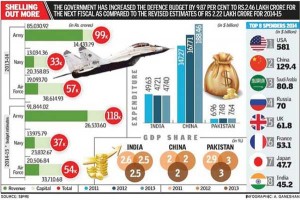 Echoing those sentiments, the Chinese Premier told the Parliament, “Building a solid national defence and strong armed forces is fundamental to safeguarding China’s sovereignty, security, and developmental interests.” He said China will comprehensively strengthen modern logistics, enhance research and development of new, high-technology weapons and equipment and develop defence-related science and technology industries.
Echoing those sentiments, the Chinese Premier told the Parliament, “Building a solid national defence and strong armed forces is fundamental to safeguarding China’s sovereignty, security, and developmental interests.” He said China will comprehensively strengthen modern logistics, enhance research and development of new, high-technology weapons and equipment and develop defence-related science and technology industries.
However, the marked emphasis on making China a maritime power is something that will set alarm bells ringing in Asian capitals. Li said, “China is a major maritime country. We need to draw up and implement a strategic maritime plan, develop marine economy, protect the marine environment, resolutely safeguard China’s maritime rights and interests, properly handle maritime disputes, actively expand bilateral and multi-lateral maritime cooperation and move close to achieve the goal of building China into a maritime power.”
Lieutenant General Zhong Zhiming, a member of the National People’s Congress (NPC), was quoted by Reuters to have said, “We must develop our weaponry and raise the standards of treatment for military personnel, only then will we be able to really strengthen our strategic combat effectiveness…” Chen Zhou, a research scholar at the Chinese Academy of Military Sciences, said the increase was “moderate and reasonable” and in keeping with China’s defence needs.
Chinese analysts justify the steep annual hikes in the defence outlay as having been “caused by the sharp increase in the wages, living expenses and pensions of 2.3 million PLA officers, civilian personnel, soldiers and army retirees.” While this is true to some extent, there is far more to the steep annual hikes in the Official Defence Expenditure (ODE) than Chinese analysts are prepared to concede.
China’s neighbours and governments across the world remember the spectacular Anti-Satellite (ASAT) test successfully conducted by China in January 2007. They see pictures of the Liaoning aircraft carrier undergoing sea trials and are aware of the plans to acquire more submarines. The acquisition of SU-30 long-range fighter-bombers with air-to-air refuelling capability, the development of anti-ship ballistic missiles and a growing footprint in the South China and East China Seas have not gone unnoticed. A twenty-first century arms race is clearly underway.
|
Comments on China’s Defence Budget for FY 2015-16… (China’s defence budget) set off a flurry of alarm among neighbouring countries. They see the relentless growth in China’s military spending—double-digit increases almost every year for the past two decades, and now the biggest in three years—as going hand-in-hand with a determination to settle sovereignty disputes in its “near seas”, that is, the Yellow, East China and South China Seas, on China’s own terms. — Economist, March 15, 2015 The US (is) monitoring China’s military developments. China (should be) more transparent and use its capabilities in a manner that’s conducive to maintenance of peace and stability in the Asia-Pacific region. — Marie Harf, US State Department China faces tough economic conditions as the business and finance sectors begin to cool, but no one supports defense cuts, from the hardliner to so-called reformer. Chinese defense budget increases have become the new normal and are simply part of the political landscape. — Richard Bitzinger, Senior Fellow, RSIS, Singapore |
The present military gap with China is still quantitative rather than qualitative…
In almost all of the biennial White Papers on National Defence, the Chinese government has stated that additional funds are needed for the modernisation of the PLA. The requirement of additional funds for force re-structuring and a qualitative increase in the levels of training is emphasized in the White Papers. Rising inflation is also cited as a reason for increased defence expenditure. However, nothing in the recent White Papers fully explains the double-digit growth in the annual defence expenditure. In response to international calls for greater openness, one Chinese military official wrote, “Transparency is a tool of the strong to be used against the weak.” It is this lack of transparency that has fuelled speculation about an arms race.
Complete transparency in defence spending has seldom been a strong point even among countries that take pride in being liberal democracies. According to the late Air Commodore Jasjit Singh, “All countries try and protect what they consider to be crucial information about their defence capability for understandable reasons; and defence expenditures are obviously part of that information except where democratic states practice greater transparency as part of their liberal ethos, domestic obligations and public oversight, and well established procedures of accountability…” Totalitarian regimes like the one in China do not practice egalitarian accounting principles neither do they have a real grip on all the details of what they actually spend.
China is investing heavily in modernising its surface-to-surface missile firepower, fighter aircraft and air-to-ground strike capability…
China’s actual military expenditure is far higher than the officially published figure. This year, it is expected to cross $200 billion. Professor David Shambaugh, a Washington-based China analyst, finds China’s defence budget the most difficult aspect of the country’s armed forces to research. In his view, “Few areas of China’s military affairs are more opaque and difficult to research than the revenue/expenditure and budget/finance domains. – but perhaps none is more important to understand.”
David Shambaugh lists several items of expenditure that do not figure in China’s Official Defence Expenditure (ODE), “China’s official defence budget does not appear to include all funds for:
- Chinese-made weapons and equipment production (as distinct from procurement)
- Some Research, Development, Test and Evaluation (RDT&E) costs
- The paramilitary People’s Armed Police
- Funds for weapons purchases from abroad
- Funds directly allocated to military factories under the control of the General Armaments Department (GAD)
- Military aid.” This year China proposes to spend $25.15 billion (Yuan 152.19 billion) on internal security. The actual expenditure on this count has normally been much higher.
The lack of progress in replacing the Indian Army’s obsolescent weapons and equipment to meet future threats is particularly worrisome…
Ted Galen Carpenter and Justin Logan point out that greater transparency would be in China’s interest, “China needs to recognise that it gains little from opacity in comparison to what it loses… Any respectable observer of the People’s Liberation Army knows about China’s growing capabilities. We know about the Sovremenny destroyers, the Sunburn missiles and the Kilo submarines. We know about the Sukhoi 30s and the new F-10 fighter. Large-scale hardware acquisition and development is hard to hide.”
China’s ODE overtook that of Japan ($42 billion) and Germany ($37.5 billion) in 2007, but at that time still lagged behind the United Kingdom ($62.38 billion) and France ($50.78 billion) whose economies are now much smaller than that of China. It is still a small fraction – less than one-fourth – of the United States’ annual defence budget of approximately $600.00 billion; not counting the supplementary grants of about $75 to 80 billion sought by the Pentagon separately every year for ongoing war(s). The US expenditure on defence is almost half – 48 per cent – of the total defence budget of the world. China, France, Japan and the United Kingdom each spend four to five per cent of the world’s total defence expenditure.
China’s military aims and modernisation strategy have been enunciated in its White Papers on National Defence, “…a three-step development strategy in modernising China’s national defence and armed forces, in accordance with the state’s overall plan to realise modernisation. The first step is to lay a solid foundation by 2010, the second is to make major progress around 2020, and the third is to basically reach the strategic goal of building informationised armed forces and being capable of winning informationised wars by the mid-21st century.”
China is investing heavily in modernising its surface-to-surface missile firepower, fighter aircraft and air-to-ground strike capability. It is acquiring strategic airlift capability, modern aircraft carriers, new submarines, improving command and control and surveillance systems and is enhancing its capacity to launch amphibious operations. Besides an all-weather railway line to Lhasa, China is engaged in constructing new missile bases, airfields and roads and military encampments close to the border.
The country’s defence expenditure is inadequate to create the capabilities that the armed forces will need in future…
With the improved logistics infrastructure in Tibet, including the Gormo-Lhasa all-weather railway line, newly constructed road axes with good lateral roads linking them and many new air strips, the Chinese are now capable of inducting larger numbers of troops into Tibet in a shorter timeframe and sustaining them for longer durations. In recent military training exercises and war games, the PLA has been practising rapid deployment of its airborne forces in Tibet and elsewhere and amphibious landing operations to simulate landings on one or more of the disputed islands. The trends in the procurement of military hardware and training activities are indicative of future plans for strategic outreach.
Coping with Emerging Challenges
Despite the long list of obsolescent weapons and equipment in service with the Indian armed forces, the present military gap with China is still quantitative rather than qualitative. In case India’s military modernisation continues to stagnate, this gap will soon become a qualitative one as well. By about 2020-2025, China will complete its military modernisation and will then be in a position to dictate terms on the resolution of the territorial dispute if India continues to neglect defence preparedness.
The lack of progress in replacement of the Indian Army’s obsolescent weapons and equipment and its qualitative modernisation to meet future threats and challenges is particularly worrisome as the Army continues to be deployed in large numbers on border management and internal security duties. It needs to upgrade its rudimentary C4I2SR system and graduate quickly to network centricity to optimise the use of its combat potential. The mechanised forces in the plains are still partly night blind, the capability to launch offensive operations in the mountains continues to remain inadequate to deter conflict. The capability to launch precision strikes from ground and air-delivered firepower, which will pave the way for the infantry to win future battles, is much short of the volumes that will be required.
India’s political leadership and the bureaucracy must learn to look at defence expenditure as a form of insurance…
Given India’s increasing vulnerabilities and rising international demands on it to act as a net provider of security as a rising regional power, the country’s defence expenditure is inadequate to create the capabilities that the armed forces will need in future. India needs to invest more in improving the logistics infrastructure along the border with Tibet, in hi-tech Intelligence, Surveillance and Reconnaissance (ISR) systems for early warning and in generating land and air-based firepower asymmetries to counter China’s numerical superiority. The Indian army is in the process of raising and suitably equipping a Mountain Strike Corps to carry the fight into Chinese territory if it ever becomes necessary. Without sufficient funding support, it will remain in limbo and never become the potent force that it has been designed to become.
All of these capabilities will require a large infusion of fresh capital. Presently, India’s defence budget – 1.74 per cent of its GDP – is too low to undertake the capacity building necessary to deter China from contemplating another border war. The defence budget needs to be increased gradually to first 2.0 and then to 3.0 per cent of the GDP. India’s growing economy should be able to sustain this hike in the defence budget over a period of three to five years, especially if the government simultaneously shows the courage to reduce wasteful subsidies.
The reasons for India’s lackadaisical approach to military modernisation include the shortage of funds on the capital account for major defence acquisitions, the inability to spend even the allotted funds due to bureaucratic red tape in decision making and the lack of a robust indigenous defence industry because of excessive reliance on incompetent Ordnance Factories and defence PSUs. India’s political leadership and the bureaucracy must learn to look at defence expenditure as a form of insurance. If properly utilised, it deters military adversaries from contemplating war and enables the armed forces to acquire the capabilities necessary to fight and win if deterrence fails.




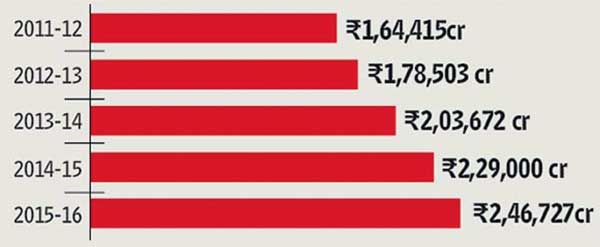
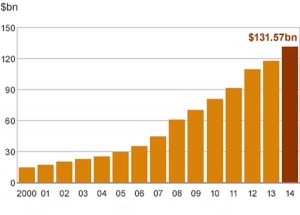
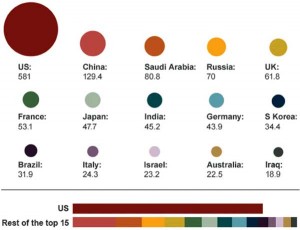

And, yes, I repost my articles ALL the time.
Brig, it is quite evident that the Indian Defence Establishment (defence ministry, finance ministry, political leadership) suffers from a Nehruvian Dogma of the Armed Forces being an unnecesary appendage to the system, a threat to the political system and best kept shelved in a corner. They are happy playng their shoddy political games while the Nations security suffers. The issue that you have written about has been written so many times before and flogged enough in the Military establishment – to no effect. The nation slumbers on, fed on Cricket, Bollywood, Secularism, Hindutva and so many miniscule issues that we have become a nation of tamashgies rather than being a Nation of conscious people. You all talking on these issues here actually makes no sense because these forums are hardly subscribed to in the National domain. Let alone the financial funding – our military infrastructure is not poised correctly for operations. We have three commands facing the Chinese and none of them having offensive capability. Dont you think one single command will do so that there is optimum utilisation of combat resourses and an inbuilt offensive capability is created out of the resourses available – allbeit with certain accretions. We need a system over-haul starting from the defence ministry to the Armed Forces.
This kind of articles are being written without any proper studies and with out dated ideas. This is one way to pressurize the civilian Govt to purchase more and more outdated equipments from foreign countries which are not required by them. Majority of defense officers are still thinking about Mortar, Hand Grenade, and 155 mm field and Assault rifles for foot soldiers. I do not know what kind of land warfare studies they are making. I asked many army officers how is Israel won the 1973 war against Arabs? Indian Army had committed similar mistake in 1971 war and lost some strategic locations at Chhamb sector. But nobody able to give the correct answer. That means Indian army may commit same mistake again in case of any future war. We had opted for Bofors guns in 1989 because Indian Army got Information that USA has supplied Weapon locating radar to Pakistan. and only Bofor gun can moving on its own power at a speed of 8 km an hour, Indian army suppose use this facility to escape from enemies return fire by changing locations after a few round of firing. But in the Kargil war Pakistan used the weapon locating radar very effectively against Indian Army. Most probably field commanders were not aware of this problem and not changed the location very frequently to escape from enemy fire. They will not make proper specification. M-777 is a good gun like Bofors. But it cannot move on its own like Bofors. The gun has to be relocated very frequently to escape from the weapon locating radar of the enemy and subsequent enemy fire. The weapon locating radar is very effective. Pakistan had effectively used it in the Kargil war against Indian foot soldiers. The Army Chief General J .J. Singh has not taken the right decision to go in for M-777. I wonder how he missed the vital point I mentioned. It is unfortunate that these senior Army officers have no war strategy and are carried away by arms dealers. This is one example . I can quote so many examples like this. Similarly Air force officer’s still think about dog fight. In 1971 war IAF had only 34 effective squadrons, each of which consisted of 12 planes . IAF had 16 air craft per combat squadron but the effective availability during the 1971 war was 12 per squadron. So in 1971 IAF had 408 effective planes. Now we have 582 effective fighter planes.In 1971 war IAF used two planes to conduct one sortie. Front plane is called front gunner and other plane is called rear gunner.If we use AWACs, all our fighter planes can conduct sorties without escort plane. AWACSs will give warning . Now we have double the fire power over a period of time. More over if we consider 12 fighter planes in a squadron, it is stated that we have 48 .5 squadrons. If we consider 16 fighter planes in a squadron, we have now 36 squadrons. The important thing to consider is the number of planes, not the squadrons. This is the kind of tricks they play against the civilian Govt. with the help of foreign agents. So do not think you can fool the public and and the present Govt. So all is not well in the defense forces. General Public will get more information from the net than army people. Why do we require Aircraft carrier? We have no plan to go and attack any other country. The We have no plan to go and attack any other country. The defencse policies
followed by all the previous Governments were to make this country one of the
biggest military powers in the world and not a developed country like
Japan, South Korea, Australia and Canada
The Indian Navy is one of the largest in the world, and as of 2014 possesses two aircraft carriers, one amphibious transport dock, 9 Landing ship tanks, 9 destroyers, 15 frigates, one nuclear-powered attack submarine, 14 conventionally-powered attack submarines, 25 corvettes, 7 mine counter-measure vessels, 10 large offshore patrol vessels, 4 fleet tankers and various auxiliary vessels and small patrol boats.” Despite this, the Navy failed to prevent the 2008 terrorist attack. Why do you require so many Air craft carrier, War ship, Frigates and Submarines. Except giving employment to so many people, majority of these equipments are not required to fight a naval war against China or Pakistan. Without a permanent base in the Indian Ocean China cannot attack India. Only USA and Western countries are still spreading rumors against China, so that they can sell their defense equipments to India. Do you know how is the ISIS over run the well equipped Iraqi army.? What kind of modernization you suggest?. But I do not think any modernization is required. The future war will be fought only using missiles. So will require only helicopter gun ships. The importance of field guns are going down since the development of Weapon locating radars. Except India nobody is talking about Field gun.. We have to improve the effectiveness of missile, avionic and jammers. Do you during Smt. Indira Gandh’s period she did not give any importance to Navy.
There is no doubt that capabilities of Indian armed forces need to be further strengthen through acquisition of state of art weapons, equipment and other supplies. However, there is greater need for demand side management in military acquisitions. In the recent past, most of the time, budget allocated have not fully utilised especially for capital acquisitions. Enhanced budget is to be demanded when in previous budgets have been fully spent. Many failure of capital acquisitions and consequently non utilization of budget are due to real or perceived corruption cases in defence acquisitions. Real corruption starts while framing the GSQR. There is a tendency to make GSQR/specifications that favours importation rather than taking the same from OFB, DPSUs where contemporary technologies exists. And moreover, in importation also a particular firms is favoured by making specifications in such a way that it suits the specifications of existing weapon, equipment and supplies of that particular firm only and others get eliminated on flimsy ground. Specifications/GSQRs should be made on generic requirements and not on whims and fancies of some individual sitting at the top in military. It should be based on generic requirements of theater of war in which our defence forces are more likely to operate, military capabilities of perceived adversaries, military intelligence etc. While framing the GSQR, views of all stakeholders including leading manufacturer of defence equipment and weapon should also be taken into consideration. If the issues relating to demand side management of defence acquisitions are not addressed properly neither indigenous defence manufacturing capabilities will develop nor import acquisitions will take place.
You sound like a DRDO man – we have got nothing worth it till today except substandard stuff from DRDO. It took the DRDO 20 years to produce a rifle for the armed forces, that was bascially a cut paste job from technologies available. Even then it was a shoddy job. The promised optical sights never came because your Dehradun Unit couldnt produce a quality product. The problem lies not in the framing of the GSQR but in the Defence Ministry and the finances available. Technical parameters can only be understood by the user and not some babu in the Defence Ministry. But sadly the Army is run by babus so you have ababu fauj.